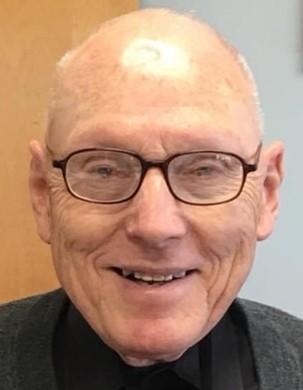Daniel Comboni
Comboni Missionaries
Institutional area
Other links
Newsletter
In Pace Christi
Ewers Paul Joseph
Born on 14th February 1937, in Cincinnati, Ohio, Paul Joseph Ewers grew up in a Catholic family. He had the grace of having a very happy childhood, something he often mentioned throughout his life.
During junior school one day, a teacher asked the class: “What would you like to be when you grow up?”. Paul raised his hand and said, “I want to be an air force gunner.” Later he would explain: “It was soon after the Second World War, and those guys were our heroes.” But it was the replies of two of his classmates that impressed Paul most of all. They said they wanted to become priests which made Paul think: “Of course, that is a more useful mission in the world than that of an air force gunner”. And he let the idea of becoming a priest occupy his mind and his heart. Shortly thereafter, Paul came across a missionary magazine about Africa and that made him alter his ambition and he said to himself: “I will become a missionary priest”.
He entered the Sacred Heart Seminary run by the Combonis in Cincinnati where he continued his schooling. In July 1956, he began his Novitiate in Monroe, Michigan. On 9th September 1958, he made his first religious vows and began the scholasticate for philosophical studies.
In September 1961, he went to Venegono Superiore, Italy, to study theology. On 9th September 1964, he made his perpetual profession and on 26th June 1965, he was ordained a priest by Cardinal Giovanni Colombo in the cathedral of Milan.
He had always looked forward to going to Africa. The following month, however, his first appointment arrived: the United States, to work as a vocations promoter. On 1st September, he started work in Yorkville, Illinois, as a vocation promoter in the apostolic school. After a few months, he was transferred to the Indian Mission of Santa Ysabel, California, as assistant to Father Ugo Riva.
In September 1968, he was at last able to leave for the mission, not in Africa, but in Ecuador, in the Apostolic Vicariate of Esmeraldas, as assistant pastor of the quasi-parish of Atacames.
In Ecuador he remained until June 1978, successively serving the parishes of San José Obrero, in Esmeraldas, of Our Lady of Mount Carmel, in Rocafuerte, and of Our Lady of Mount Carmel, in Borbon. From Rocafuerte (1970-73), he organised a fundraiser for the construction of a secondary school with friends and acquaintances in Cincinnati, where he then taught English and religion.
In July 1979, Father Paul returned home, assigned to the community of Montclair, New Jersey, in charge of missionary animation. Three years later, he moved to the seminary in Monroe, Michigan, as a teacher and bursar.
In July 1988, he was able to return to Ecuador, as assistant pastor of the parish of Quinindé, in the Diocese of Esmeraldas, and remained there until June 1996, when he was called back to Montclair, to the Centre for missionary animation and justice and peace ministry.
In January 2008, Father Paul was assigned to the community of Blue Island, Illinois, ministering in the parish of Saint Donato, in the Diocese of Chicago, where he remained until June 2011.
In September of the same year, he was in La Grange Park, a centre for missionary animation and vocations promotion, also open to pastoral care for African-American youth. Father Paul was given the care of the nearby parish of Saint Martin de Porres. In January 2013, he moved to the community of Covina, California, as superior of the Centre for missionary animation and the Centre for Elderly Confreres.
On 1st January 2019, he “retired” and withdrew to the Provincial House in Cincinnati, where he remained until his death on 14th May 2023.
What Father Paul’s confreres remember most about him was his desire to tell people all he had experienced. Among these, there was often the story about a small fishing village in Ecuador, where the local Catholic community, encouraged by him, decided to build a junior school and a high school. Father Paul also taught religion in both schools. The students called him good-naturedly “Father Gringo”, in reference to his North American origins.
One day, a man from that small village stopped Father Paul and said to him: “I am the father of 12 children. Like every other breadwinner in this place, I had already planned to bequeath $800 each to my sons and daughters, which they could use for a few drinks with friends in my memory. Today, however, thanks to the two schools you built, I no longer have dollars to leave them, because I used them all for their school education. But I’m proud to leave them something that no one can take away from them.” (Lindsay Braud, and F.M.)

